Free agency has mostly run its course, trades have been made, and the 2019 NFL draft has concluded. So it’s a perfect time for another edition of the NFL Power Rankings.
We’re doing things a bit differently this time. Rather than compiling rankings from our throng of reporters and experts, we’re using this edition to unveil the first set of ESPN’s Football Power Index (FPI) ratings. Each team’s rating is composed of a predicted offensive, defensive and special teams efficiency, as measured by expected points added per play, and that rating is the basis for FPI’s game-level and season-level projections.
The FPI has established the 1-32 order that follows, with our NFL Nation reporters giving their takes on where their teams improved the most in the offseason. So enjoy as you get ready for OTAs and minicamps to start.

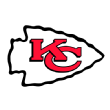
Projected wins: 10.3
Chance to make playoffs: 80.3 percent
Where the team improved this offseason: Young blood on defense. The major defensive acquisitions (safety Tyrann Mathieu and end Frank Clark) are 26 and 25, respectively. Similarly, the Chiefs’ other significant defensive additions should have their best football ahead. That should help resuscitate a unit that had relied on older players such as Eric Berry and Justin Houston, both 30 and recently released by Kansas City. — Adam Teicher

Projected wins: 10.1
Chance to make playoffs: 76.9 percent
Where the team improved this offseason: Pass-catchers. This was arguably the Saints’ biggest weakness by the end of last season. But adding tight end Jared Cook in free agency and getting receiver Ted Ginn Jr. back healthy for a full season will definitely help. And ideally the Saints will get more out of their backups, with Cameron Meredith now two years removed from a major knee injury, and young guys such as Tre’Quan Smith, Keith Kirkwood, Dan Arnold and Austin Carr continuing to develop. — Mike Triplett

Projected wins: 10.1
Chance to make playoffs: 76.4 percent
Where the team improved this offseason: Pass rush. The Rams re-signed outside linebacker Dante Fowler Jr. after he proved himself as a playmaker in only half a season under Wade Phillips. Fowler’s production took a significant step forward in the playoffs, and that trend is likely to continue after his first training camp with the team. The Rams also added veteran pass-rusher Clay Matthews. Despite a drop in production last season, it’s likely that Matthews’ savvy will help a young group that also includes third-year pro Samson Ebukam. — Lindsey Thiry

Projected wins: 10.5
Chance to make playoffs: 85.8 percent
Where the team improved this offseason: Cornerback. When a team selects cornerbacks with second-round picks at 45 and 56, it should be a boost to the position, and that’s essentially what the Patriots have going for them in 2019. They traded up to No. 45 this year to select Vanderbilt’s Joejuan Williams, who at 6-foot-3⅝ and 211 pounds has unique size and can match up against bigger receivers and possibly tight ends. And then their 2018 second-round pick — Florida’s Duke Dawson at No. 56 overall — is healthy and ready to go after spending the first half of his rookie season on injured reserve and then not appearing in a game after that. So that’s two highly regarded second-rounders joining an already crowded depth chart. — Mike Reiss
Damien Woody evaluates the players New England added in the draft, including wide receiver N’Keal Harry.
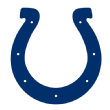
Projected wins: 9.2
Chance to make playoffs: 57.9 percent
Where the team improved this offseason: A plan to improve the defense as a whole. It started with the signing of defensive end Justin Houston, who has 78.5 sacks in his career, and continued through the draft last month. The Colts, who finished 11th overall in total defense last season, used seven of their 10 draft picks on defensive players. Rock Ya-Sin, the team’s first draft pick (34th overall), will push hard for one of the starting cornerback spots. The Colts also selected four linebackers, as at least one of the three starting spots at that position is wide open. — Mike Wells
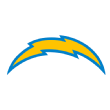
Projected wins: 8.8
Chance to make playoffs: 49.7 percent
Where the team improved this offseason: Pass defense. The Chargers struggled in coverage and open-field tackling at times last season, particularly in the team’s humbling playoff loss to the Patriots. On defense, the Chargers gave up nine passing plays of 15 yards or more against New England. The Bolts addressed that issue by adding athletic, veteran linebacker Thomas Davis in free agency, and using five of their seven draft picks on defensive players, including interior pass-rusher Jerry Tillery in the first round and rangy free safety Nasir Adderley in the second. — Eric D. Williams

Projected wins: 9.1
Chance to make playoffs: 55.6 percent

Where the team improved this offseason: Running back. This might not be a popular opinion, seeing as how Jordan Howard (traded to the Eagles) rushed for 3,370 yards over three seasons with the Bears. But Chicago’s front office did a better job collecting running backs who fit head coach Matt Nagy’s scheme, signing veteran Mike Davis and drafting Iowa State’s David Montgomery in the third round. Combining Davis and Montgomery with explosive all-purpose threat Tarik Cohen gives the Bears more flexibility and pass-catching ability in the backfield. — Jeff Dickerson

Projected wins: 8.5
Chance to make playoffs: 44.2 percent
Where the team improved this offseason: A plan to protect Deshaun Watson. The Texans used two of their three picks in the first two rounds on offensive tackles: Alabama State’s Tytus Howard (No. 23) and Northern Illinois’ Max Scharping (No. 55). It remains to be seen whether they will be impact players in 2019, but Houston took a step in the right direction by drafting two players it hopes will protect its franchise quarterback for the foreseeable future. — Sarah Barshop
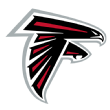
Projected wins: 8.4
Chance to make playoffs: 41.8 percent
Where the team improved this offseason: Offensive line. The Falcons really invested in the line both through the draft and via free agency. They drafted Chris Lindstrom No. 14 overall as a guard with toughness, then followed by trading back into the end of the first round to select tackle Kaleb McGary. The Falcons also signed a dependable veteran guard in James Carpenter along with guard Jamon Brown. Lindstrom and Carpenter should start at the guard spots, and McGary has the opportunity to start at right tackle if he outperforms Ty Sambrailo. — Vaughn McClure

Projected wins: 9.4
Chance to make playoffs: 66.5 percent
Where the team improved this offseason: Running back. The Eagles traded for Jordan Howard and selected Penn State’s Miles Sanders in the second round. The talent infusion will elevate a unit that ranked 28th in rushing last season (1,570 yards) and was second from the bottom in yards per attempt (3.9). — Tim McManus

Projected wins: 8.5
Chance to make playoffs: 44.8 percent
Where the team improved this offseason: Bolstering Kirk Cousins’ supporting cast. The Vikings went all-in on offense with their first four picks in the draft, notably to solidify the interior of the offensive line but also to surround their quarterback with more weapons. Adding TE Irv Smith Jr. and RB Alexander Mattison into the mix with Adam Thielen, Stefon Diggs, Kyle Rudolph and Dalvin Cook gives Cousins more options to work with to create the explosive plays the QB feels were lacking in 2018. Fixing the O-line was the top priority for Minnesota, and at this rate we know the Vikings feel confident in Garrett Bradbury’s ability to start day one (probably at center) and Dru Samia providing quality depth. But the skill positions needed support too, which the Vikings addressed with their draft picks. — Courtney Cronin
Adam Schefter, Dan Orlovsky and Louis Riddick break down what they expect from Kirk Cousins’ second season with the Vikings.

Projected wins: 8.6
Chance to make playoffs: 46.8 percent
Where the team improved this offseason: Speed on defense. The Packers got younger and quicker at the edge position by signing Preston Smith and Za’Darius Smith in free agency, and by taking Rashan Gary at No. 12 in the draft. And then on the back end, the addition of first-round safety Darnell Savage Jr. (4.36-second 40-yard dash at the combine) and sixth-round cornerback Ka’dar Hollman (4.36 at his pro day) made them faster there, too. They might also have helped their defensive speed in the middle if seventh-round inside linebacker Ty Summers (4.51 at the combine) can make the team. — Rob Demovsky

Projected wins: 8.0
Chance to make playoffs: 35.1 percent
Where the team improved this offseason: Wide receiver. Adding A.J. Brown and Adam Humphries gave the Titans two sure-handed pass-catchers who instantly upgrade their group. Humphries is a likely candidate to lead the team in receptions, especially on third downs. His 72.4 percent catch rate last season would be a welcome addition for Marcus Mariota. Although just a rookie, Brown is a reliable pass-catcher who presents Mariota with a huge target on various in-breaking routes. One of Brown’s best attributes is his ability to get yards after the catch. He should be able to take those short, high-percentage throws by Mariota and turn them into significant gains. Brown’s experience playing both in the slot and on the outside should set him up for plenty of game-day snaps. — Turron Davenport
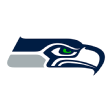
Projected wins: 8.4
Chance to make playoffs: 41.2 percent
Where the team improved this offseason: Special teams. Punter Michael Dickson’s All-Pro rookie season masked the fact that the Seahawks were not very good in this phase in 2018, finishing 24th in Football Outsiders’ DVOA rankings for special teams after finishing 20th in 2017. The Seahawks expect several of their draft picks, including linebackers Cody Barton and Ben Burr-Kirven, to be impact special-teams players. They signed kicker Jason Myers, who’s coming off a Pro Bowl season, with the hope that he can provide the stability they’ve lacked during up-and-down seasons from Blair Walsh and Sebastian Janikowski. They’re all projections at this point, but at least on paper, the Seahawks have improved on special teams. — Brady Henderson
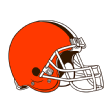
Projected wins: 8.8
Chance to make playoffs: 51.5 percent
Where the team improved this offseason: League image. The Browns have gone from longtime league laughingstock to the NFL’s trendiest team. Cleveland rode the momentum from a turnaround 2018 season and became one of the most aggressive teams in adding high-profile talent. The Browns upgraded with playmakers such as wide receiver Odell Beckham Jr., running back Kareem Hunt, pass-rusher Olivier Vernon and defensive tackle Sheldon Richardson. Owners of the NFL’s longest playoff drought (16 seasons), the Browns are now a popular pick to win their first AFC North title. — Jamison Hensley

Projected wins: 8.5
Chance to make playoffs: 45.8 percent
Where the team improved this offseason: Pass coverage. The Steelers have shown a commitment to improving their pass defense over the past three months. The signing of free agent Steven Nelson gives Pittsburgh a legitimate starting corner alongside Joe Haden. The franchise drafted linebacker Devin Bush No. 10 overall in part because of his speed and coverage ability, areas in which free-agent linebacker Mark Barron will also help. Third-round cornerback Justin Layne was considered one of the most aggressive press corners in the draft. The back end looks stronger, which is necessary for a team that has struggled drafting cornerbacks in recent years. — Jeremy Fowler

Projected wins: 8.5
Chance to make playoffs: 44.9 percent
Where the team improved this offseason: Speed on offense. The Ravens’ methodical offense — which led the NFL in drives of 10-plus plays — got a jolt of explosiveness in the draft. Wide receiver Marquise Brown, the Ravens’ first-round pick, is among the fastest players ESPN draft analyst Todd McShay has ever evaluated. Wide receiver Miles Boykin, a third-round selection, was among the 20 fastest players at the NFL combine. And running back Justice Hill, a fourth-rounder, was the fastest running back in Indianapolis in February. The goal was to pair fleet-footed playmakers with quarterback Lamar Jackson. — Jamison Hensley

Projected wins:7.6
Chance to make playoffs: 26.8 percent
Where the team improved this offseason: Quarterback. Nick Foles might not be an elite QB, but he will bring the consistency the Jaguars have lacked at the position during the past five seasons with Blake Bortles. The Jaguars were never quite sure what they were going to get each week until the middle of the first quarter — and when it was bad, it was really bad. The Jaguars also believe Foles’ accuracy will help a young group of receivers immensely because the ball will be placed in the right spot significantly more often than it was with Bortles. — Mike DiRocco

Projected wins: 8.4
Chance to make playoffs: 44.2 percent
Where the team improved this offseason: Pass rush. The biggest move the Cowboys made was keeping DeMarcus Lawrence on a five-year, $105 million contract. Lawrence has 25 sacks the past two seasons. The next biggest was acquiring Robert Quinn in a trade from the Miami Dolphins. He had 6.5 sacks last season and will be motivated for a big 2019 entering the final year of his deal. Randy Gregory, who had six sacks last season, is currently suspended indefinitely, but the Cowboys have not given up hope he can play in 2019. Add in the current depth on the line with Tyrone Crawford, Maliek Collins, a free-agent pickup such as Kerry Hyder and second-round pick Trysten Hill, the Cowboys are as deep and talented along the front as they’ve been since Rod Marinelli joined the coaching staff in 2013. — Todd Archer

Projected wins: 7.7
Chance to make playoffs: 27.9 percent
Where the team improved this offseason: Edge rusher. With the retirement of Julius Peppers and a move toward an odd-man front, the Panthers made a big investment in finding edge rushers to improve a pass rush that ranked 27th in the NFL last season. They signed veteran Bruce Irvin to a one-year deal, then drafted Florida State’s Brian Burns in the first round and Alabama’s Christian Miller in the third. Pair them with Mario Addison, Efe Obada and a few other players the team is developing, and the pass rush can’t help but be better. — David Newton

Projected wins: 7.6
Chance to make playoffs: 26.7 percent
Where the team improved this offseason: Outside pass rush. There’s nothing the 49ers prioritized more this offseason than complementing dominant interior force DeForest Buckner. So the Niners doubled down, making significant investments by trading for and signing Dee Ford to an $85.5 million contract and using the No. 2 overall pick on Nick Bosa. San Francisco has lost 11 one-possession games over the past two seasons, and the Niners believe the amped-up edge rush can help them come up with the big plays that can turn some of those defeats into victories. — Nick Wagoner

Projected wins: 7.0
Chance to make playoffs: 18.0 percent
2 Related
Where the team improved this offseason: The offensive line. Talk to many in the league and their opinion is that coach Vic Fangio’s best get in the offseason was offensive line coach Mike Munchak. Munchak will certainly bring his impressive résumé to the table, but the Broncos have also committed plenty of player resources. They made Ja’Wuan James the highest-paid right tackle in the league in free agency. They then used a second-round pick — No. 41 overall — on Dalton Risner, who figures to get a long look at starting right guard as soon as the Broncos get him on the field. The questions that have to be answered for the group to fully flourish are Ronald Leary’s recovery from a torn Achilles tendon and how Connor McGovern does in replacing the departed Matt Paradis at center. But in previous seasons, Munchak has done plenty with less raw talent than he has here. In the end, the Broncos need to be much better than they were up front in 2018 if quarterback Joe Flacco is going to play as well as the team thinks he can. — Jeff Legwold

Projected wins: 6.5
Chance to make playoffs: 11.7 percent
Where the team improved this offseason: Defense. Well, at least on paper. After all, the happiest guy in the Raiders’ compound following the draft had to be defensive coordinator Paul Guenther, what with six of Oakland’s draft picks coming on the defensive side of the ball, including three defensive ends. This comes after the Raiders had a league-low 13 sacks with the NFL’s No. 26-ranked total defense. Edge rusher Clelin Ferrell and safety Johnathan Abram should be immediate starters for a revamped unit, and cornerbacks Trayvon Mullen and Isaiah Johnson will compete for snaps. — Paul Gutierrez

Projected wins: 7.0
Chance to make playoffs: 17.4 percent
Where the team improved this offseason: Tight end. The Lions committed a ton of resources to the position — two free agents and two draft picks — to bulk up a spot where they had major issues in 2018. By adding T.J. Hockenson (first round) and Isaac Nauta (seventh round) along with signing Jesse James and Logan Thomas in free agency, the Lions might have an entirely new position group in 2019. The combination of Hockenson and James, who are expected to make the team, gives Matthew Stafford two big, reliable options in the short-to-medium passing game he didn’t have last season. — Michael Rothstein

Projected wins: 6.4
Chance to make playoffs: 10.1 percent
Where the team improved this offseason: Pass defense. The Buccaneers ranked last in completion percentage allowed (73 percent), yards per attempt allowed (8.2) and Total QBR allowed (65) last season, according to ESPN Stats & Information data. When a linebacker was the nearest defender to the targeted receiver, the Bucs allowed a league-worst completion percentage of 82 percent last season, according to NFL Next Gen Stats. This is a big reason they selected Devin White, one of the draft’s best coverage linebackers. They also drafted three defensive backs — Sean Bunting, Jamel Dean and Mike Edwards — who collectively give them more press-man ability, speed and ball-hawking skill. — Jenna Laine

Projected wins: 7.2
Chance to make playoffs: 21.3 percent
Where the team improved this offseason: Running back. The Jets replaced Isaiah Crowell and Bilal Powell with Le’Veon Bell and Ty Montgomery as their RB1 and RB2, respectively. Bell is one of the top all-purpose backs in the league, a significant upgrade over Crowell. Montgomery, a former wide receiver, is a poor man’s Bell in that he can line up anywhere in the formation, creating potential mismatches. The Bell-Montgomery tandem will open up the playbook for new coach Adam Gase, who can cook up ways to take pressure off second-year QB Sam Darnold. — Rich Cimini

Projected wins: 6.7
Chance to make playoffs: 14.3 percent
Where the team improved this offseason: Offensive line. The Bills’ offensive line finished 30th in Football Outsiders’ OL rankings last season and the team responded by firing coach Juan Castillo, signing six linemen in free agency and trading up to draft tackle Cody Ford in the second round. In all, Buffalo invested about $40 million guaranteed — including $27.5 million to center Mitch Morse — in free-agent additions along its offensive line, which could result in as many as four new starters this season. — Mike Rodak

Projected wins: 6.2
Chance to make playoffs: 10.0 percent

Where the team improved this offseason: Defense. The Redskins haven’t had a defense finish the season ranked among the top 10 in either yards or points allowed since 2009. To help change that, they signed safety Landon Collins in free agency (and tried to sign linebacker C.J. Mosley). They also learned that linebacker Reuben Foster, who was claimed in November but has yet to play for Washington, won’t be suspended. And the Redskins drafted outside linebacker Montez Sweat in the first round. A big key here: All three players are 25 years old or younger. That means Washington probably will have at least seven starting defenders who are 25 or younger. It’s the best base of young defensive talent the Redskins have had in a while. — John Keim

Projected wins: 6.0
Chance to make playoffs: 7.8 percent
Where the team improved this offseason: Offensive line. While the re-signing of right tackle Bobby Hart didn’t go over well with fans, the Bengals have given themselves a lot of flexibility on their O-line. First, they signed John Miller, who probably will take over at right guard, and also took the safe draft pick in Jonah Williams. Williams probably could play right away at almost any spot on the line. For a unit that has struggled the past two seasons, having the ability to put the best five out there will help the offense immensely. — Katherine Terrell

Projected wins: 6.3
Chance to make playoffs: 10.2 percent
Where the team improved this offseason: Offensive line. This has been a Dave Gettleman priority since his arrival as general manager — get some hog mollies to block for Eli Manning. Not only is the left side of the line (tackle Nate Solder and guard Will Hernandez) in its second season together, but the Giants also added Pro Bowl guard Kevin Zeitler in a trade with the Browns and are getting center Jon Halapio back from a broken leg. Throw in the likely addition of veteran Mike Remmers at right tackle and the offensive line should be massively improved from the unit that was a mess the first half of last season. — Jordan Raanan
Domonique Foxworth explains why GM Steve Keim is undermining Kliff Kingsbury’s authority by saying Kyler Murray will be the Cardinals’ starter.

Projected wins: 5.5
Chance to make playoffs: 4.3 percent
Where the team improved this offseason: Wide receiver. Beyond Larry Fitzgerald and Christian Kirk, the receiving corps didn’t contribute much to Arizona’s offense last season. That’s expected to change this season through the draft alone. Arizona bulked up an area of significant need by drafting three receivers: Andy Isabella, Hakeem Butler and KeeSean Johnson. If even two of them make the team and contribute immediately, the Cards’ offense will make significant strides. Aside from Fitzgerald and Kirk, who combined for 1,324 yards, no other receiver had more than 210 yards last season. In addition to the draft picks, the Cardinals took a shot in free agency on Kevin White, who has played 14 games in four years, with the hopes that he’s over his injury woes and can contribute immediately. — Josh Weinfuss

Projected wins: 5.6
Chance to make playoffs: 5.0 percent
Where the team improved this offseason: A plan to escape mediocrity. There wasn’t much roster improvement for the Dolphins this offseason, but they deserve credit for knowing they weren’t a signing or two away, instead deciding to pile up their major resources for the future. In 2020, the Dolphins are set to have over $100 million in salary-cap space and as many as 12 draft picks, including five in the first three rounds, to continue rebuilding this team into an eventual contender. Owner Stephen Ross gave his blessing for the Dolphins to plan for the future rather than selling hope for a everything-goes-right 9-7 season. Headed by Brian Flores and a low-cost Josh Rosen, Miami’s chances for long-term success have a clearer path than there has been in a decade. — Cameron Wolfe
Credit: Source link